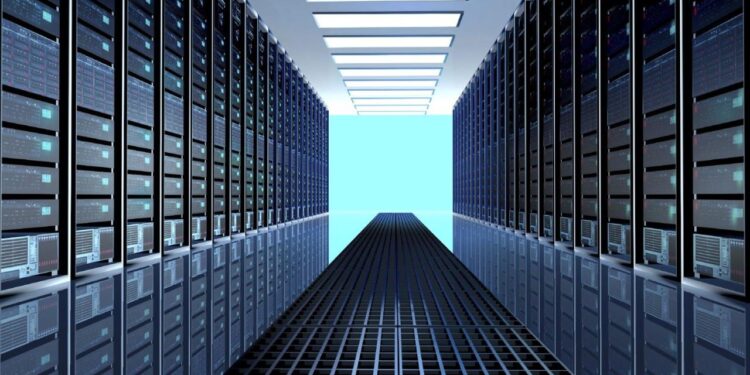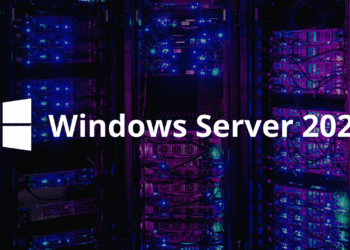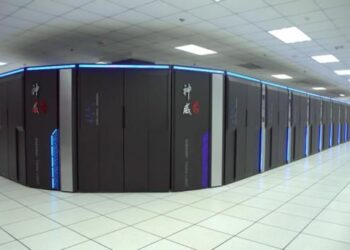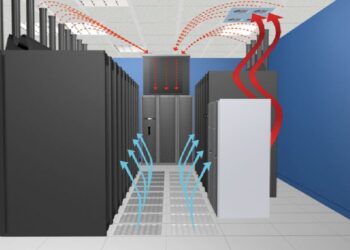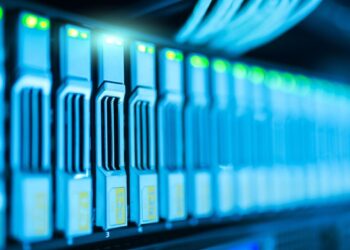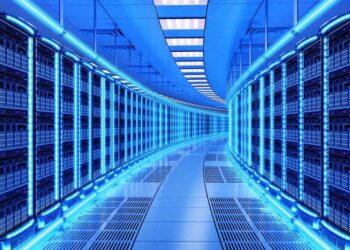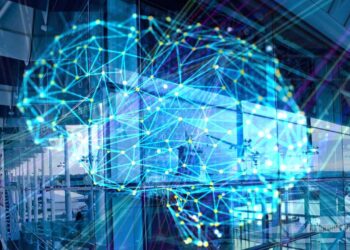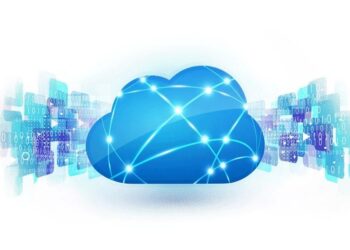In today’s hyper-connected world, data centers have become the lifeblood of digital infrastructure, enabling everything from cloud computing to streaming services and online transactions. However, as demand for data processing and storage skyrockets, these facilities face an increasing challenge: managing energy consumption and minimizing their environmental impact. In response, the data center industry is embracing sustainable solutions that not only reduce operational costs but also contribute significantly to global environmental sustainability.
This article delves into the transformation of data centers into greener, more energy-efficient facilities. It explores the drivers behind sustainable practices, examines the cutting-edge technologies that support these efforts, and highlights real-world examples of facilities leading the way in green innovation. By shedding light on the challenges and opportunities inherent in this shift, we aim to provide a comprehensive overview of how sustainable strategies are revolutionizing the future of data centers.
Data centers serve as the nerve centers of our digital age. They store vast amounts of information, process millions of transactions per second, and keep critical applications running 24/7. Yet, despite their technological marvels, these centers are notorious for their high energy consumption and substantial carbon footprint. As the global community intensifies its efforts to combat climate change, data centers are now under pressure to reduce energy usage, improve efficiency, and transition toward renewable energy sources.
The quest for sustainability in data center operations has led to innovative designs and practices. From advanced cooling systems that use natural airflows to the incorporation of renewable energy sources like solar and wind, the industry is evolving rapidly. This article examines these advancements, providing a detailed account of how sustainable solutions are not just beneficial for the environment but also advantageous for business operations, boosting both operational efficiency and corporate image.
The Environmental Impact of Data Centers
Data centers are energy-intensive by nature. Traditionally, they have relied on fossil fuels to power servers, cooling systems, and other infrastructure, contributing to significant greenhouse gas emissions. According to several industry reports, data centers account for a growing percentage of global electricity consumption, and if left unchecked, their environmental impact could escalate dramatically.
Key Environmental Concerns
A few critical environmental concerns associated with data centers include:
A. Energy Consumption: The continuous operation of servers and cooling systems requires enormous amounts of electricity, often sourced from non-renewable energy.
B. Carbon Emissions: Fossil fuel-powered electricity generation contributes to carbon dioxide emissions, exacerbating climate change.
C. Heat Generation: Data centers produce a significant amount of heat, necessitating energy-intensive cooling systems that further increase their energy demand.
D. Water Usage: Some cooling technologies rely on large volumes of water, which can strain local water resources, especially in arid regions.
E. Electronic Waste: The rapid pace of technological advancement results in frequent hardware upgrades, leading to considerable electronic waste that must be managed responsibly.
Understanding these issues is crucial for appreciating why the move toward sustainable solutions in data centers is not just an environmental imperative but also a business necessity.
Sustainability Trends in Data Centers
In response to environmental concerns and increasing regulatory pressures, data center operators worldwide are adopting sustainable practices. These trends not only reduce environmental impacts but also offer long-term cost savings and operational efficiencies.
Shift Toward Renewable Energy
One of the most significant trends is the integration of renewable energy sources. Many data centers are now installing solar panels, wind turbines, and even exploring geothermal energy options to power their operations. By diversifying energy sources, these facilities reduce their reliance on fossil fuels and contribute to a lower carbon footprint.
Energy-Efficient Cooling Systems
Cooling represents one of the largest energy expenses in data center operations. Innovations in cooling technology are helping to address this challenge. Techniques such as liquid cooling, free-air cooling, and the use of advanced thermal management systems are becoming increasingly popular. These systems not only lower energy consumption but also enhance the reliability and lifespan of server equipment.
Sustainable Architecture and Design
Modern data centers are designed with sustainability at their core. Architects and engineers are focusing on:
A. Optimized Layouts: Designing facilities to maximize airflow and natural cooling.
B. Modular Designs: Building data centers in modular units allows for scalability and more efficient resource management.
C. Eco-Friendly Materials: Using sustainable building materials reduces the overall environmental impact of the construction process.
Circular Economy Initiatives
The concept of a circular economy is gaining traction in the data center industry. This approach emphasizes reusing, refurbishing, and recycling equipment rather than discarding it. Initiatives include:
A. Hardware Recycling Programs: Implementing systems to recycle old servers and components responsibly.
B. Repurposing Facilities: Converting outdated data centers into facilities with other uses, thereby extending their life cycle.
C. Vendor Partnerships: Collaborating with suppliers to develop products designed for longevity and recyclability.
Key Strategies for Sustainable Data Center Operation
Achieving sustainability in data centers requires a multifaceted approach. Operators are implementing a range of strategies that address energy efficiency, waste reduction, and the integration of renewable resources.
Energy Efficiency and Management
Energy efficiency is at the heart of sustainable data center operations. By optimizing energy usage, facilities can significantly reduce both operational costs and environmental impact. Key strategies include:
A. High-Efficiency Servers: Utilizing modern servers that offer improved performance per watt.
B. Virtualization: Consolidating workloads through virtualization techniques to maximize server utilization.
C. Power Usage Effectiveness (PUE) Optimization: Monitoring and improving PUE, a critical metric that compares total energy consumption to energy used by IT equipment.
D. Smart Energy Management Systems: Deploying software tools that analyze energy consumption in real time and adjust operations accordingly.
Advanced Cooling Technologies
Cooling systems are a major focus area for reducing energy consumption. Emerging technologies and practices include:
A. Liquid Cooling: Using liquid instead of air for heat dissipation, which is more efficient in removing heat from densely packed servers.
B. Free-Air Cooling: Leveraging ambient air to cool data centers, especially in cooler climates, to reduce the reliance on mechanical chillers.
C. Immersion Cooling: Submerging servers in a thermally conductive fluid to achieve higher cooling efficiency and lower energy use.
D. Thermal Storage Systems: Storing excess cooling energy during off-peak hours for use during periods of high demand.
Renewable Energy Integration
The shift to renewable energy is pivotal for sustainable operations. Data centers are adopting various methods to integrate renewable sources into their energy mix:
A. On-Site Renewable Installations: Installing solar panels and wind turbines directly at the facility to generate clean energy.
B. Power Purchase Agreements (PPAs): Entering long-term contracts with renewable energy providers to secure a stable supply of green energy.
C. Energy Storage Solutions: Using battery storage systems to store renewable energy, ensuring a reliable power supply even when production fluctuates.
D. Grid Modernization: Collaborating with utility companies to improve grid infrastructure, making it easier to incorporate renewable energy sources.
Waste and Resource Management
Effective management of electronic waste and resources is a critical component of sustainability. Strategies include:
A. E-Waste Recycling Programs: Establishing dedicated programs to safely recycle or repurpose outdated hardware.
B. Resource Recovery: Recovering valuable materials such as copper and gold from discarded equipment.
C. Lifecycle Assessments: Conducting comprehensive assessments to understand and mitigate the environmental impact of data center components throughout their lifecycle.
D. Sustainable Procurement Policies: Sourcing equipment and services from vendors with strong sustainability credentials.

Technologies Driving Energy Efficiency
Technological advancements are at the forefront of the data center sustainability revolution. Several innovative technologies are being deployed to enhance energy efficiency and reduce environmental impacts.
AI and Machine Learning
Artificial intelligence (AI) and machine learning (ML) are revolutionizing how data centers operate. These technologies analyze vast amounts of operational data to optimize energy consumption, predict equipment failures, and improve overall efficiency. AI-driven analytics can automatically adjust cooling systems and server workloads, ensuring that energy is used only where and when it is needed.
Internet of Things (IoT) Integration
IoT devices and sensors are being deployed throughout data centers to monitor environmental conditions, energy usage, and equipment performance in real time. This granular level of data enables operators to make informed decisions about energy management and maintenance, further boosting efficiency.
Advanced Monitoring Systems
Modern data centers utilize sophisticated monitoring systems that track energy consumption down to individual components. These systems provide detailed insights into power usage effectiveness and help identify inefficiencies. By continuously monitoring performance, data center managers can implement targeted improvements to reduce waste.
Automation and Robotics
Automation plays a critical role in managing complex data center operations. Robotic systems are increasingly used for tasks such as equipment maintenance, cable management, and environmental monitoring. Automation not only improves efficiency but also reduces the likelihood of human error, contributing to safer and more reliable operations.
Renewable Energy Integration and Green Power
The drive to adopt renewable energy sources is one of the most transformative trends in the data center industry. As governments and corporations alike commit to reducing carbon emissions, data centers are aligning their strategies to meet these ambitious targets.
On-Site Renewable Energy Projects
Many data centers are now investing in on-site renewable energy projects. By installing solar panels or wind turbines, facilities can generate their own clean power. This not only reduces reliance on traditional energy grids but also offers a buffer against rising electricity costs. Additionally, on-site generation allows for better control over energy supply and can be tailored to match the facility’s specific needs.
Power Purchase Agreements (PPAs)
For data centers located in areas where on-site renewable installations are not feasible, Power Purchase Agreements (PPAs) provide an alternative solution. Through PPAs, data centers commit to purchasing renewable energy from dedicated providers. These long-term contracts help stabilize energy costs and ensure a consistent supply of green power.
Energy Storage Innovations
Integrating renewable energy into data center operations also requires robust energy storage solutions. Battery technologies and other storage systems are critical for managing the intermittency of renewable sources. By storing surplus energy generated during peak production times, data centers can maintain a steady power supply during periods of low renewable output. This integration of energy storage not only supports operational reliability but also enhances overall energy efficiency.
Grid Interconnection and Modernization
Collaborating with utility companies to modernize the electrical grid is another key aspect of renewable energy integration. Advanced grid technologies enable better coordination between renewable energy producers and data center operators. Enhanced grid interconnection helps balance energy loads, reduces transmission losses, and creates a more resilient energy supply system. This partnership between data centers and the grid is essential for maximizing the benefits of renewable energy.
Case Studies and Global Examples
Across the globe, several data centers have emerged as leaders in sustainability, demonstrating the practical benefits of green initiatives.
North America: Greenfield Data Center Initiatives
In North America, several tech giants have embarked on ambitious projects to transform their data center operations. These initiatives typically involve comprehensive sustainability strategies that include on-site renewable installations, advanced cooling techniques, and aggressive energy efficiency targets. For example, one leading provider has implemented a fully automated cooling system that adapts to real-time environmental data, resulting in significant reductions in energy consumption and operational costs.
Europe: Pioneering Renewable Energy Adoption
European data centers have been at the forefront of renewable energy integration. With stringent environmental regulations and strong public support for sustainability, many European facilities have shifted toward renewable power sources through PPAs and on-site generation. Some centers are even experimenting with innovative cooling systems that leverage the naturally cool climates of northern regions, thereby reducing the reliance on traditional, energy-intensive air conditioning systems.
Asia-Pacific: Innovative Cooling and Efficiency Solutions
In the Asia-Pacific region, rapid economic growth and technological expansion have led to a surge in data center construction. Operators in this region are uniquely positioned to adopt cutting-edge technologies that optimize energy efficiency. Advanced liquid cooling systems, AI-powered energy management, and IoT integration are just a few examples of the innovative solutions being implemented. These strategies not only address the energy challenges posed by rapid expansion but also set new benchmarks for sustainability in high-density urban areas.

Alphabetical List of Notable Sustainable Data Center Practices
A. Automated Environmental Controls: Utilizing AI-driven systems to regulate temperature, humidity, and airflow.
B. Battery Storage Integration: Implementing robust energy storage systems to manage renewable intermittency.
C. Cooling System Innovation: Adopting liquid, free-air, or immersion cooling technologies to reduce energy use.
D. Data-Driven Optimization: Leveraging advanced analytics to monitor and enhance energy efficiency.
E. Eco-Friendly Construction: Employing sustainable building materials and design practices for data centers.
Challenges and Future Prospects
Despite the significant progress made, the transition toward sustainable data centers is not without its challenges. Addressing these issues will be crucial for the industry’s long-term success.
Technological and Infrastructure Barriers
One of the primary challenges is the need for substantial investment in new technologies and infrastructure. Upgrading existing data centers to incorporate modern energy-efficient systems can be costly and time-consuming. Furthermore, the integration of renewable energy sources requires a stable and modern grid infrastructure, which is still under development in many regions.
Regulatory and Policy Considerations
Government policies and regulations play a critical role in shaping the data center landscape. While many governments are incentivizing green initiatives through tax breaks and subsidies, regulatory uncertainty can hinder investment. Data center operators must navigate a complex web of local, national, and international regulations, which can vary widely in terms of environmental standards and enforcement.
Balancing Performance and Sustainability
Data centers must strike a delicate balance between high performance and sustainability. While green technologies offer significant benefits, they must be carefully integrated to ensure that they do not compromise the operational performance or reliability of critical digital services. Continuous innovation and research are needed to develop solutions that meet both energy efficiency and performance criteria.
The Road Ahead: Opportunities for Innovation
Looking to the future, the drive for sustainability presents numerous opportunities for innovation. Emerging technologies such as quantum computing, advanced energy storage, and next-generation cooling systems promise to further revolutionize the industry. Collaborative research between academia, industry, and government will be essential in overcoming current challenges and unlocking new possibilities for sustainable data center operations.
Investments in training and workforce development are also critical. As data centers evolve, so too must the skills of the professionals who design, operate, and maintain them. Building a workforce that is adept at managing both technology and sustainability will be a cornerstone of future success.
Conclusion
The transformation of data centers into sustainable facilities represents a fundamental shift in how digital infrastructure is conceived and operated. By embracing renewable energy, optimizing cooling and power usage, and adopting innovative technologies, data centers are setting new standards for energy efficiency and environmental stewardship. This transition is not only essential for reducing the carbon footprint of our digital ecosystem but also for ensuring the long-term viability of data centers as demand continues to grow.
Sustainable solutions in data centers offer a win-win scenario: they reduce operational costs, enhance system reliability, and contribute to global efforts against climate change. As regulatory pressures intensify and consumer demand for greener practices increases, the data center industry is poised to become a leading example of how technology and sustainability can coexist harmoniously.
The journey toward greener data centers is still evolving, and while challenges remain, the progress made so far is both impressive and encouraging. By investing in innovation, fostering collaboration, and continuously refining operational practices, the industry can achieve remarkable sustainability milestones. In doing so, data centers will not only power the digital world but also pave the way for a more sustainable future for all.

